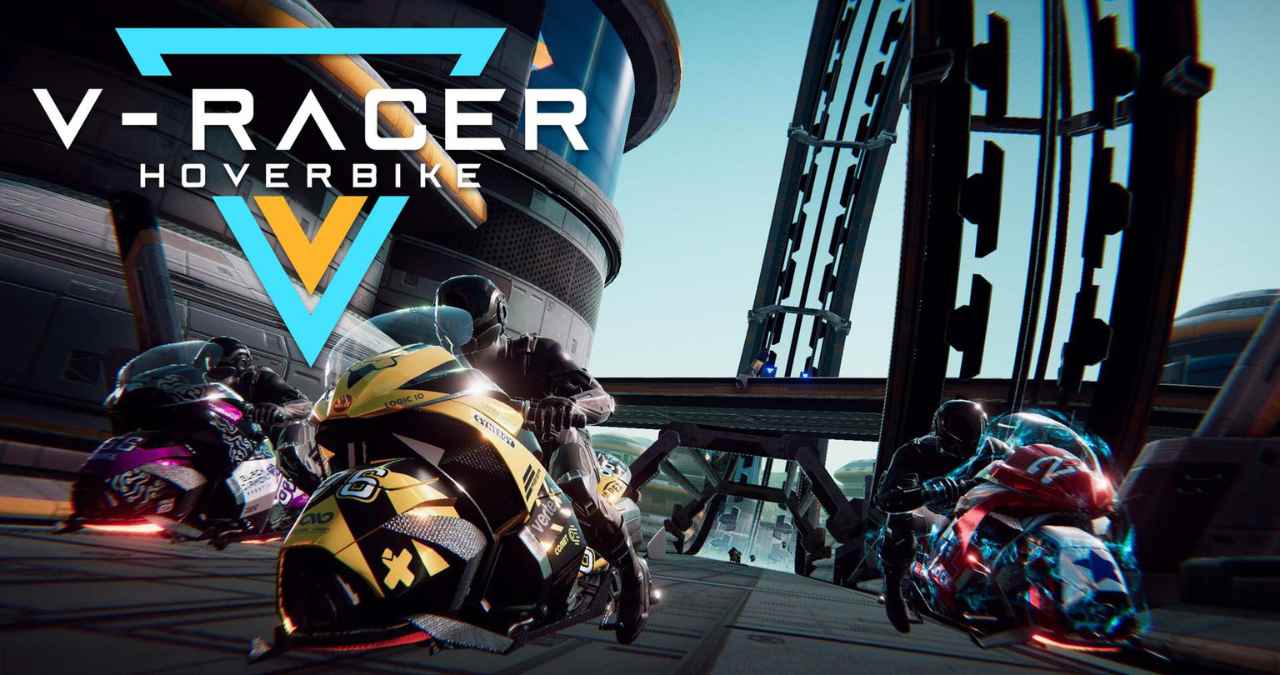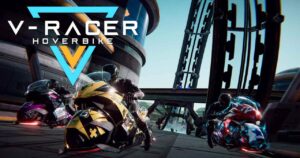V-Racer Hoverbike, the arcade-style VR racer that’s been in early access since 2018, is finally moving toward a full release. The latest update brings native OpenXR support, full bHaptics integration, and engine tweaks aimed at smoothing out the experience on modern headsets.
While the core of the game hasn’t changed, tight, high-speed circuit racing on futuristic hoverbikes, the new features push immersion further and broaden compatibility for players with different setups.
OpenXR support simplifies headset compatibility
With OpenXR now implemented, V-Racer Hoverbike becomes more accessible across a wider range of VR platforms. This change means players no longer need SteamVR as a bridge layer if their headset supports OpenXR natively. The result is lower overhead, faster startup times, and potentially fewer tracking issues, especially on newer standalone systems running through PC link.
This also future-proofs the game. OpenXR has become the standard for cross-platform VR development, and supporting it signals that the developers are still keeping pace with evolving hardware ecosystems rather than locking into older APIs.
It’s a behind-the-scenes shift, but it matters for performance and long-term usability.
bHaptics adds physical feedback to high-speed racing
One of the more noticeable additions is support for bHaptics gear. With a compatible vest, players now get vibration feedback based on collisions, acceleration, and environmental effects like passing turbines or energy boosts.
In a game that’s already built around speed and tight maneuvering, haptic feedback doesn’t just add immersion, it gives a sense of spatial awareness that can help during intense races. Feeling a jolt when clipping a barrier or a pulse as you boost through a straightaway grounds the experience in a way that visuals and audio alone can’t replicate.
The implementation isn’t overly aggressive. Feedback is tuned to enhance awareness, not overwhelm the senses, which fits the fast but clean visual style of the game.
Visuals and engine optimizations round out the update
Beyond the headline features, the game has also been polished visually. Lighting has been adjusted, shadows rebalanced, and draw distances cleaned up for better clarity at high speeds. These aren’t dramatic changes, but in a game where your view is constantly moving, even small improvements help reduce eye strain and improve reaction time.
Loading times have been reduced and some legacy bugs tied to older VR input systems have been addressed. It’s the kind of housekeeping that signals the game is being prepped for a 1.0 release rather than just surviving in early access.
V-Racer Hoverbike still delivers a straightforward experience. No upgrades, no story mode, just pure speed-focused racing with an arcade edge. This update doesn’t reinvent it, but it sharpens the delivery, tightens platform support, and makes the core loop more tactile for players who want that extra physical layer in VR.
Virtual Reality Explorer & Game Reviewer
Always the first to plug in. VRSCOUT dives head-first into the most immersive VR worlds, analyzing mechanics, comfort, innovation, and that elusive “presence” factor. If he says it’s worth it, it probably is.




